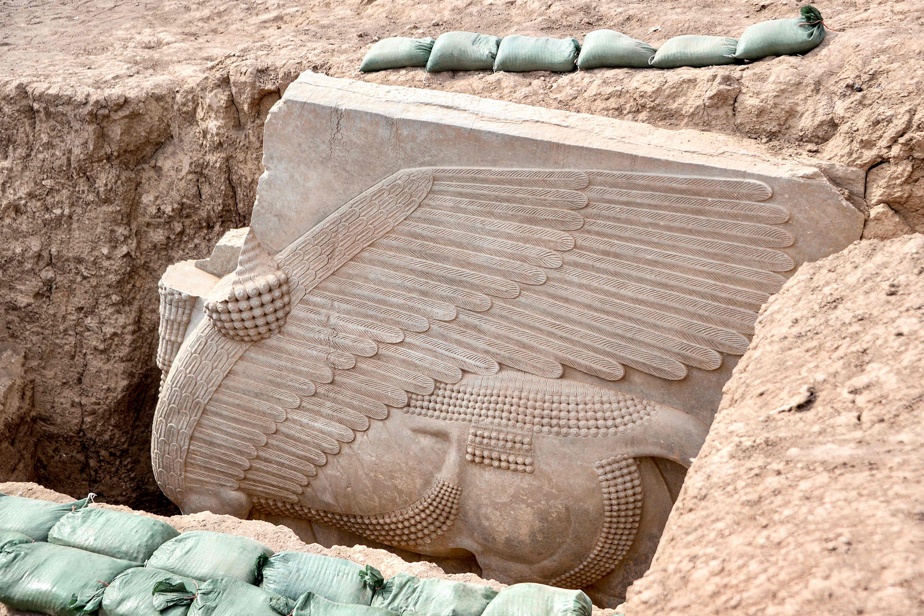(Mosul) It is more than 2700 years old, but, from wings to hooves, it is remarkably preserved: a lamassu, an Assyrian winged bull, in alabaster of “enormous” dimensions, was revealed in Iraq by a mission led by a French archaeologist .
“The attention to plastic detail is incredible,” marvels Pascal Butterlin, professor of archeology of the ancient Near East at the University of Paris I Panthéon-Sorbonne, who led the mission made up of French, European and Iraqi archaeologists. .
As proof: the feathers that make up the wings are practically like new, just like the hooves of this “hybrid creature, between animal and human”, explains the archaeologist to AFP who revealed the lamassu, buried underground, with his colleagues in mid-October.
All that is missing is the head, “stolen in the 1990s by looters”, then found, cut into pieces, by Iraqi customs before ending up in the Iraqi National Museum in Baghdad.

PHOTO ZAID AL-OBEIDI, AGENCE FRANCE-PRESSE
The dimensions of this lamassu are impressive: it measures 3.8 by 3.9 meters and weighs 18 tons, all made of gypsum alabaster. “I have never excavated something so big in my life,” says Pascal Butterlin. “Usually, it is only in Egypt or Cambodia that such enormous pieces are excavated! “.
Produced during the time of the Assyrian king Sargon II whose reign extended from 722-705 BC. BC, the lamassu was stationed at the entrance to the city of Khorsabad, approximately 15 km north of present-day Mosul (northern Iraq).
In Mesopotamian mythology, “he is one of those monsters who were dominated and tamed. They are placed at the entrance to the city to protect it,” says Mr. Butterlin. “It is undoubtedly one of the last bulls to have been installed in Khorsabad before construction was interrupted” at the time of Sargon II.
Already mentioned by the French archaeologist Victor Place in the 19the century, the lamassu was not documented again until the 1990s, when it was “cleared” for an “emergency response” by Iraqi authorities. It was at this time that his head was cut off and stolen by looters.
But the biography of the lamassu of Khorsabad also resonates with the contemporary history of Iraq. In 2014, when the Islamic State (IS) group swept through the north of the country, the village was deserted by its inhabitants. The latter knew of the existence of the lamassu and they “protected and hid” it before fleeing, says Pascal Butterlin.
